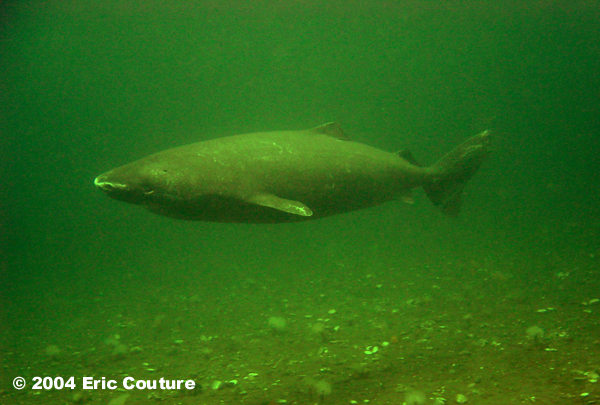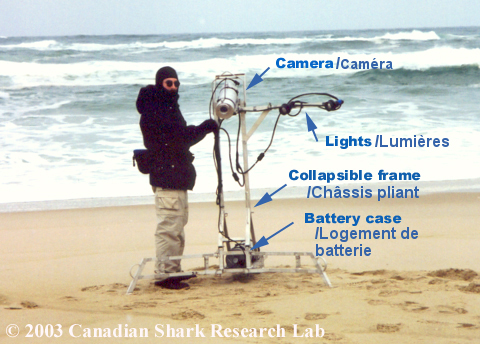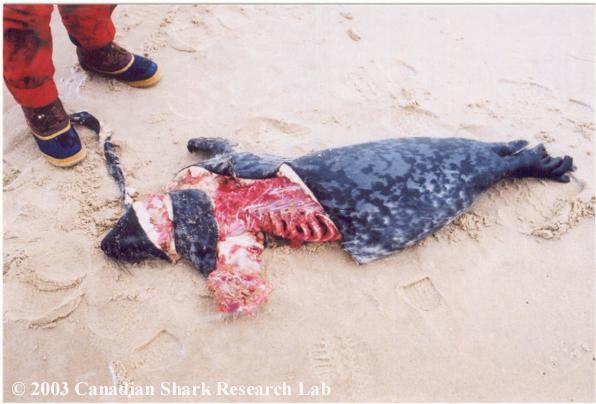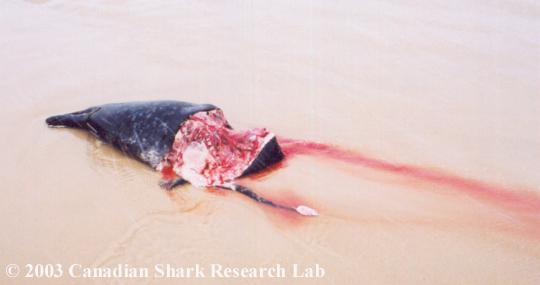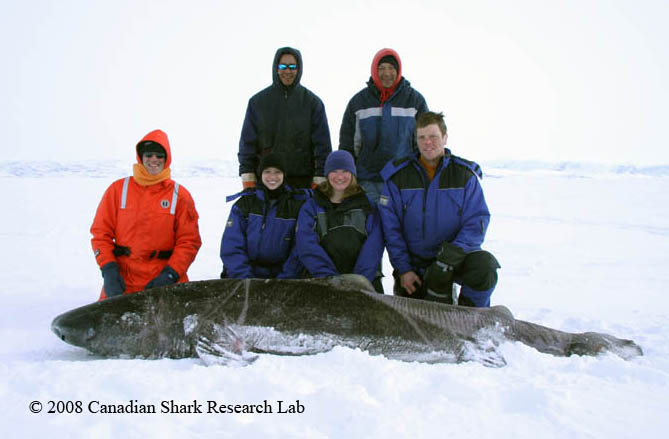Greenland shark research
Somniosus microcephalus
Species profile
For more information on greenland sharks, please visit the greenland shark page.
Greenland sharks and Sable Island
For years large numbers of seal carcasses have washed up on the beaches of Sable Island. The majority of these carcasses reveal a savage attack, with the blubber on the front half of the animal having been peeled off in a spiral shape down to the mid section of the seal. In many cases, some of the blubber is missing. Many believe that these unique kills are the work of Greenland sharks feeding on the seals.
A team of scientists and film makers from the Discovery Channel conducted an expedition to Sable Island to try and confirm the identity of this mystery seal killer, but never obtained definitive proof. This work was profiled on Discovery Channel in 2003.
Underwater camera "sharkcam"
This underwater camera was built to capture images of Greenland sharks feeding close to the Sable Island shore, but is now being used to film a range of shark species in their natural habitat. It was designed so that it could be small enough to be deployed from a zodiac by two scientists and yet heavy enough to withstand any shark encounters as well as wave action. A small video camera controlled by a computer allows scientists to program unattended recording intervals. The unit is completely self contained and can even be programmed and downloaded without having to disassemble the unit.
Greenland sharks in the Arctic
An Arctic expedition was launched in 2008 to study Greenland sharks. Led by Dr. Aaron Fisk of the University of Windsor, the goal of the expedition was to study the biology, movements and role in the Arctic foodweb of sharks that were captured through the ice. Tissue samples were taken for laboratory analysis and to determine methods for determining age. Other sharks were tagged with archival satellite popup tags and released for tracking. The results of the research, along with satellite tagging of Greenland sharks off of eastern Canada, have been published in Campana et al. (2013). This work was profiled on Discovery Channel's TV show Dirty Jobs in 2008.
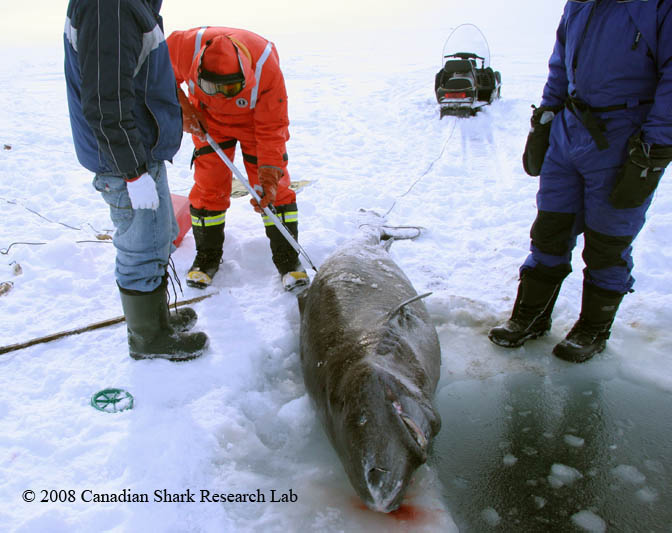
Attaching a satellite tag to a Greenland shark. The fishing hole cut through the ice is visible to the right of the shark.
- Date modified:
